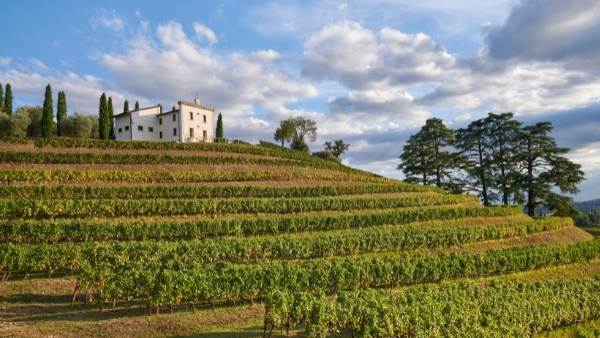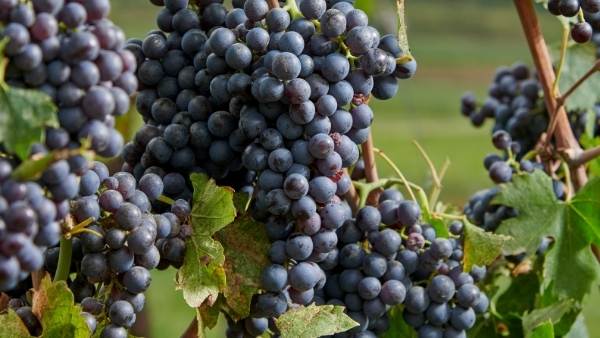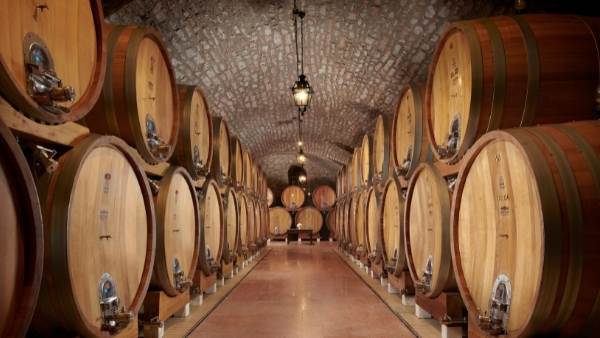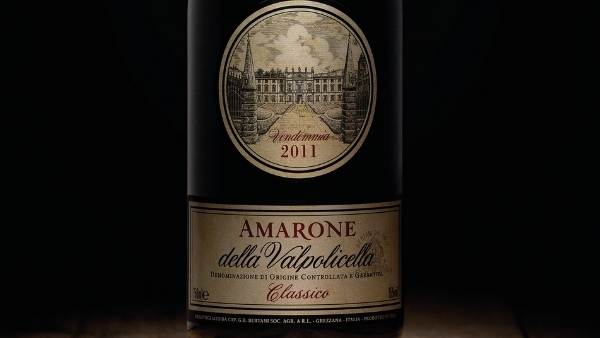Cantina Bertani: A Tradition of Innovation
Posted by Rob Ward on 9 Feb 2022
Cantina Bertani has an illustrious heritage with over a century and a half of winemaking, and is still proudly producing some of the finest quality wines of the Veneto, including esteemed estate Valpolicella Classico Superiore DOC and Amarone della Valpolicella Classico DOCG wines.
The Bertani journey began in 1850 when a young Gaetano Bertani travelled to Burgundy to study new and innovative viticultural techniques under Jules Guyot. Inspired by Guyot’s genius for vine husbandry, Bertani and his brother founded Cav. G.B. Bertani in 1857 in Valpantena - a pre-alpine valley between Verona and Lago di Garda - in what was then the Kingdom of Venetia (now Veneto).
Throughout a period of great social and political upheaval in Italy, the Bertani company grew and expanded across the Valpolicella – the source of some of Italy’s finest red wines – and has been exporting wines to the world since 1880.
Central to the Bertani philosophy is working with the terrior of the region to create unique place-driven wines with a clear and unmistakable elegance and stylistic profile. To this end, in 2018 , Bertani released the estate’s single-vineyards project: “I Cru di Bertani”. ‘Ognisanti’ comes from a single vineyard in the classified Valpolicella Classico Superiore DOC, and ‘Le Miniere’ Valpolicella Classico DOC is made from fruit from vineyards located above the former Novare mines, where manganese was once mined from under the slopes of the estate.
True to the legacy of Gaetano Bertani, the Bertani winery, under Chief Operating Officer and winemaker, Andrea Lonardi, continue to blend innovation and tradition to produce wines which are amongst the most vibrant and dynamic of the region, while being a model for sustainable viticultural practices.
In 1958, Bertani were instrumental in the creation of the Amarone della Valpolicella style for which the region has become known. By means of a happy accident, a number barrels of sweet recioto wine had been allowed to ferment dry. What could have been a small disaster for the winery was soon recognised to be a highly fortuitous discovery. Although the style was not immediately popular, Bertani’s winemakers – including winery manager Ernesto Barbero – saw the potential of this rich and elegant wine: persevering and perfecting the Amarone style, which, today, has become a stalwart of producers across the Valpolicella region.

Today, the Bertani Winery covers over 200 hectares of vineyards located across Verona and produces a comprehensive range of red and white wines.
Foremost in the Bertani estates are the vineyards of Tenuta Novare, at Arbizzano di Negrar, in Valpantena, the heart of the Valpolicella Classica area. Here, on calerous-marl soils, Corvina Veronese and Rondinella grapes are grown on Guyot-trained vines, exclusively for the Cantine’s famed Amarone.
The Estate vineyards of the Valpantena ravine exhibit superior drainage, and fine sunny aspects, and offer the diurnal range so essential for optimising ripeness while balancing fresh acidity. Here, the slopes are steep enough to warrant stone terraces - each home to only a few rows of vines. These hand-hewn terraces prevent the wan soils being washed into the ravine by rainfall and erosion, and make the vines accessible.
On the steep terraced hillsides of Tenuta Novare, the vines are tended entirely by hand – without tractors or machine harvesters – and the small bunches of grapes are tended meticulously, yielding fruit of exceptional quality.

The Bertani Amarone della Valpolicella Classico is a blend of native Corvina Veronese and Rondinella. Corvina is naturally light in body and with a light bright red hue and high acidity which imparts a characteristic tart sour-cherry flavour to wine. Small Corvina berries are naturally low in tannin but have thick skins, making them ideal for drying to make Amarone. Rondinella, by contrast, is dark on the vine with a blue hue, but imparts a softer texture with intense, fruity, aromas and natural tannins. The blend of Corvina and Rondinella produce a wine which is rich in the flavour, colour and tannin, and that typifies the intensely age-worthy Amarone Classico.
Harvest for the Corvina and Rondinella grapes is entirely by hand, and typically takes place in late September. Grapes destined for the Amarone are picked slightly earlier than those elsewhere on the estate, which are destined for Valpolicella or Valpolicella Superiore wines. Bunches are carefully selected, and only the ripest fruit is carried carefully to the winery, where the bunches are sorted again. After sorting, the grapes are carried to specially constructed drying rooms (fruttai) where they are laid in single layers on bamboo racks. This drying of the fruit in this manner– the classic apassimento method – concentrates the fruit sugars and the flavours within.

In order for appassimento drying to be effective, fruit must be fully ripe and in perfect condition when harvested. Grape selection in the vineyard is vital, and temperature and humidity in the fruttai is moderated to prevent the growth of damaging grey rot (Botrytis Cinerea). At Bertani, grapes for the Amarone della Valpolicella Classico are laid to dry for 120 days – between September and January - losing between 30 to 50% of their weight during this time.
The apassimento method dates to the time of the Roman empire, where sweet recioto wines, fermented from the sweet concentrated grape must, were trafficked the length and breadth of the empire. However, Amarone wines, which Bertani pioneered since 1958, are distinct from the classical recioto wines in that they are fermented completely dry. As winemaking styles have evolved over the last twenty to thirty years – in part as a response to the demands of the American market and influential critics – certain Amarone producers have released noticeably sweeter wines with higher residual sugars, imparting an increased richness, which some contend is at the expense of subtlety. The Bertani style, by contrast, has remained timeless, and relatively unchanged since 1958, and the Cantina have sought to produce wines which finely balance acidity, fruit, alcohol and tannin, and which enable and reward patient cellaring.
In mid-January, after four months drying on specialised bamboo racks, concentrated grapes are carefully destemmed and gently crushed, before the must is macerated at low temperatures for up to 50 days – to extract the rich tannins and phenolic compounds within the skins, that will impart the rich dry profile for which the final wine is famed.

After maceration, a slow fermentation starts takes place over 30 days at room temperature, before the Amarone Classico is racked into large 70HL barrels (foudres), where it will rest for seven years in the cellars of Cantina Bertani.
All good things come to those who are willing to wait, and following seven years in large oak, the wine emerges to spend a further 12 months in bottle, stabilising and maturing further prior to its release.
Mature and beguiling, yet only just breaking into its stride, the 2011 Bertani Amarone della Valpolicella offers a deep garnet colour in the glass and a nose is of fresh black cherry, leading into notes of maraschino cherry and plum. On the palette, the wine is deep and complex, displaying dried fruit, oolong tea, liquorice, spice and red-berry fruits, and a long velvety vanilla note on the finish. The wine’s bracing acid backbone and rich ripe tannins will ensure that this Amarone will cellar for years to come: the continuing legacy of the Bertani tradition.




